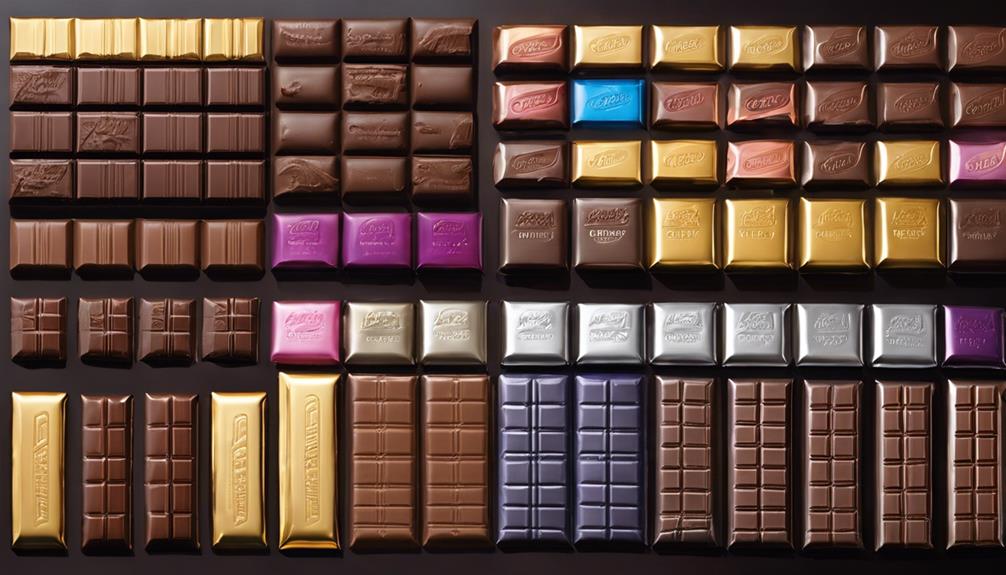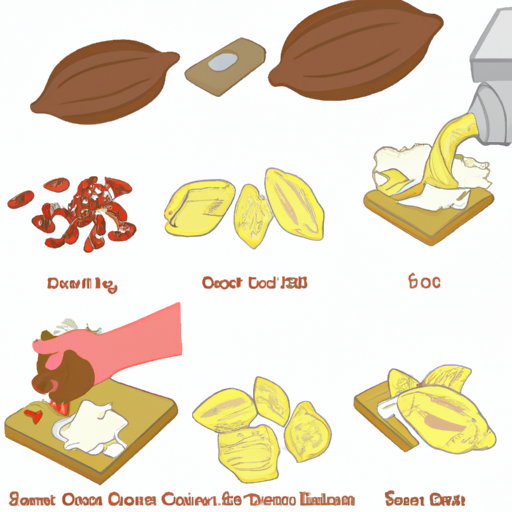Are you aware that raw cacao powder is packed with antioxidants and minerals?
As someone who loves baking, I have been experimenting with different recipes using raw cacao powder.
One question that often comes up is whether or not extra baking soda is needed when using this ingredient in baking.
In this article, I will delve into the composition of raw cacao powder and the role of baking soda in baking.
I will also explore factors to consider when using raw cacao powder and alternative leavening agents.
Through my research and personal experience, I will provide tips for successful baking with raw cacao powder and discuss recipes that may benefit from extra baking soda.
Additionally, I will offer insights on adjusting other ingredients to compensate for the acidity of raw cacao powder.
By the end of this article, you will have a better understanding of finding the right balance when using raw cacao powder in your baking endeavors.
Key Takeaways
- Adding extra baking soda when using raw cacao powder improves the texture and rise of baked goods.
- Adjustments may be necessary when using raw cacao powder, such as increasing leavening, balancing acidity, adjusting sweetness, and adding more fat or liquid.
- Personal preference and experimentation are important in finding the right balance of baking soda and raw cacao powder.
- Raw cacao powder not only enhances the flavor of baked goods but also provides health benefits due to its antioxidants and mineral content.
Understanding the Composition of Raw Cacao Powder
Raw cacao powder, with its rich and indulgent composition, adds a heavenly touch to any baking recipe. When using raw cacao powder in baking, it is important to understand its composition and how it interacts with other ingredients.
One key consideration is the role of baking soda in leavening. Baking soda is a leavening agent that reacts with acids to produce carbon dioxide, which helps baked goods rise.
Raw cacao powder is naturally acidic, so it can activate the baking soda and contribute to the leavening process. However, it is not necessary to use extra baking soda when using raw cacao powder in baking, as the acidity of the cacao powder is usually balanced by other ingredients.
In the subsequent section, we will further explore the role of baking soda in baking and how it affects the overall outcome of your baked goods.
The Role of Baking Soda in Baking
When it comes to baking, baking soda plays a crucial role in leavening. It helps dough or batter rise by releasing carbon dioxide gas when combined with an acidic ingredient, such as yogurt or buttermilk.
This reaction creates bubbles, which expand during baking and give the baked goods a light and fluffy texture.
How baking soda helps with leavening
To achieve a light and fluffy texture in your baked goods, rely on the magical powers of baking soda. Baking soda is a leavening agent that helps dough or batter rise. It does this by releasing carbon dioxide gas when it reacts with an acid or heat. Baking soda works differently from other leavening agents like baking powder or yeast. Baking powder contains both an acid and a base, while baking soda is purely a base. If you use baking powder instead of baking soda, you won’t need additional acid in your recipe. Yeast, on the other hand, releases carbon dioxide gas through fermentation. So, if your recipe calls for baking soda, it’s important to use it to achieve the desired texture. Now, let’s explore its interaction with acidic ingredients…
Its interaction with acidic ingredients
The magical reaction between acidic ingredients and baking soda creates a bubbling and frothy concoction that brings life and lightness to your baked treats. Baking soda, a base, reacts with acidic ingredients in your recipe to produce carbon dioxide gas. This gas gets trapped in the dough or batter, causing it to rise and create a soft and fluffy texture. When using raw cacao powder in baking, it’s important to consider its pH level. Raw cacao powder is slightly acidic, which means it can react with baking soda to create the desired leavening effect. Additionally, acidic ingredients can enhance the flavor of baked goods with raw cacao powder, adding a tangy or fruity note to the chocolatey taste. Considering these factors will help you achieve the perfect texture and flavor in your baked goods. Moving forward, let’s explore the other factors to consider when using raw cacao powder.
Factors to Consider When Using Raw Cacao Powder
Consider using raw cacao powder in your baking to add a rich, velvety flavor that will transport your taste buds to a decadent chocolate paradise. When using raw cacao powder, it’s important to understand acidity levels and consider suitable substitutions.
Here are some factors to consider when using raw cacao powder:
-
Acidic ingredients: Raw cacao powder is naturally acidic, so it’s important to balance the acidity in your recipe. Consider using alkaline ingredients like baking soda to neutralize the acidity and create a better flavor profile.
-
Recipe adjustments: Depending on the recipe, you may need to adjust the amount of raw cacao powder used. Experiment with different quantities to achieve the desired taste and texture.
-
Substitutions: If you don’t have raw cacao powder on hand, you can use natural cocoa powder as a substitute. However, be aware that the flavor and texture may be slightly different.
-
Flavor intensity: Raw cacao powder has a more intense and bitter flavor compared to regular cocoa powder. Keep this in mind when determining the amount to use in your recipe.
-
Experimenting with different recipes: Now that you understand the factors to consider when using raw cacao powder, you can start experimenting with different recipes to find the perfect balance of flavors and textures.
Transitioning into the subsequent section about experimenting with different recipes, you can further explore the versatility of raw cacao powder in creating delicious treats.
Experimenting with Different Recipes
Get ready to embark on a mouthwatering journey as you dive into the world of different recipes using raw cacao powder, unlocking a world of indulgent flavors and irresistible textures. Experimenting with substitutions and trying different baking techniques can result in unique and delightful creations. To help you navigate through this culinary adventure, take a look at the table below, which showcases the effects of various substitutions and techniques on the final outcome of your baked goods.
| Substitution | Texture | Flavor |
|---|---|---|
| Extra baking soda | Light and fluffy | Slightly bitter |
| No extra baking soda | Dense and fudgy | Intense chocolate |
By experimenting with these variables, you can tailor your recipes to suit your preferences. Now that you have explored the effects of different substitutions and techniques, let’s delve into the world of alternative leavening agents to further enhance your baking prowess.
Alternative Leavening Agents
Explore the world of alternative leavening agents to discover new ways to elevate your baking skills and create even more delectable treats.
When it comes to baking with raw cacao powder, you may wonder if you need to use extra baking soda. While baking soda is often used as a leavening agent in recipes, raw cacao powder can have a natural acidity that can react with baking soda to create a rise in your baked goods. However, the acidity levels can vary between different brands of raw cacao powder.
To ensure the right balance, it’s important to understand the role of acidity in baking and experiment with alternative leavening options such as baking powder or cream of tartar. These alternatives can help achieve the desired rise without overpowering the flavor of the cacao.
Now, let’s move on to some tips for successful baking with raw cacao powder.
Tips for Successful Baking with Raw Cacao Powder
To achieve the best results when incorporating raw cacao powder into your baking, you’ll want to pay attention to the quality and origin of the cacao. Experiment with different ratios of acidity-neutralizing agents to enhance the flavor profile and texture of your treats.
Understanding acidity is crucial in achieving the desired results. Raw cacao powder is naturally acidic, so it’s important to balance this acidity to avoid any bitterness in your baked goods. You can adjust recipes by adding a pinch of baking soda, which helps neutralize the acidity and enhance the chocolate flavor. Additionally, you can try using alternative leavening agents like cream of tartar or buttermilk to achieve similar results.
Experimenting with different ratios will help you find the perfect balance for your recipes. Remember, adjusting acidity is just one factor in successful baking with raw cacao powder.
Now, let’s move on to recipes that benefit from extra baking soda.
Recipes that Benefit from Extra Baking Soda
In my experience, there are certain recipes that benefit from the addition of extra baking soda. This helps ensure proper rise and texture.
For example, recipes that include acidic ingredients such as buttermilk or lemon juice may require additional leavening. This is to balance out the acidity and achieve a light and fluffy texture.
Additionally, recipes that call for a high amount of dense ingredients like chocolate or nuts may also benefit from extra baking soda. This helps create a lighter finished product.
Examples of recipes that may require additional leavening
Try adding a pinch of baking soda to your chocolate chip cookie recipe that includes raw cacao powder to ensure a light and fluffy texture. This simple addition can make a significant difference in the final outcome of your baked goods. Here are three examples of recipes that may require additional leavening:
-
Chocolate cake: Baking soda helps activate the natural acidity in cocoa powder, resulting in a higher rise and a moist, tender crumb.
-
Brownies: Adding a little baking soda to your brownie batter can create a softer and chewier texture.
-
Pancakes: Baking soda reacts with the acids present in ingredients like buttermilk or yogurt, leading to fluffy and light pancakes.
By understanding the science behind leavening agents, you can ensure proper rise and texture in your baked goods. Now let’s explore how you can achieve this by considering the importance of proper measurements and techniques.
Ensuring proper rise and texture
When it comes to baking with raw cacao powder, ensuring proper rise and texture is crucial. One way to achieve this is by ensuring even distribution of the leavening agents, such as baking soda.
Raw cacao powder is known to have a more intense flavor and higher acidity compared to regular cocoa powder. Therefore, it may require additional leavening to counterbalance its acidity and help the baked goods rise properly.
However, it is important to avoid over mixing the batter, as this can lead to a dense and tough texture. Instead, gently fold in the dry ingredients until just combined. This will help maintain the lightness and airy texture of the final product.
Transitioning into the subsequent section about adjusting other ingredients to compensate for acidity, there are other factors to consider when baking with raw cacao powder.
Adjusting other Ingredients to Compensate for Acidity
Although it may be tempting to simply add extra baking soda when using raw cacao powder in baking, it is important to consider adjusting other ingredients to compensate for the acidity. By adjusting the flavor profile and potential health benefits, you can create a well-balanced and delicious treat.
Here are three key considerations to keep in mind:
-
Sweeteners: Raw cacao powder can have a bitter taste, so you may need to increase the amount of sweetener used in your recipe to balance the flavors.
-
Fat content: Adding more fat, such as butter or oil, can help offset the acidity of raw cacao powder and create a smoother texture in your baked goods.
-
Liquid content: Raw cacao powder can absorb more liquid than regular cocoa powder, so you may need to adjust the amount of liquid in your recipe to ensure proper consistency.
By making these adjustments, you can optimize the flavor and texture of your baked goods when using raw cacao powder.
In the next section, we will discuss the conclusion: finding the right balance.
Conclusion: Finding the Right Balance
When it comes to baking with raw cacao powder, finding the right balance is a matter of personal preferences and experimentation. As I have discovered, the unique flavors of raw cacao powder can add a rich and intense taste to baked goods, making them truly enjoyable.
Through trial and error, I have learned to adjust other ingredients to compensate for the acidity of raw cacao powder, resulting in delicious treats that satisfy both my taste buds and my desire for a scientific approach to baking.
Personal preferences and experimentation
If you’re like me, you might want to play around with different amounts of baking soda and raw cacao powder to find the perfect balance for your taste buds. Personal taste plays a big role in baking, and experimenting with ratios can help you achieve the desired flavor and texture in your baked goods. To give you an idea of how different ratios can affect your recipes, here’s a table showcasing the results of my own experiments:
| Baking Soda (tsp) | Raw Cacao Powder (tbsp) | Result |
|---|---|---|
| 1 | 1 | Dense |
| 1 | 2 | Balanced |
| 2 | 1 | Light |
| 2 | 2 | Bitter |
By adjusting the amounts of baking soda and raw cacao powder, you can fine-tune the flavor and texture to suit your preferences. Once you find the right balance, you can truly enjoy the unique flavors of raw cacao powder in your baked goods.
Enjoying the unique flavors of raw cacao powder in your baked goods
Indulging in the rich and distinct flavors of raw cacao powder adds a delectable touch to your homemade treats. But did you know that raw cacao powder can also be used in savory dishes? Its unique flavor profile can enhance the taste of dishes like chili or mole sauce.
In addition to its delicious taste, raw cacao powder also offers numerous health benefits when used in baking. It’s packed with antioxidants, which can help fight inflammation and promote heart health. Raw cacao powder is also a good source of minerals such as magnesium and iron. These minerals are essential for various bodily functions, including energy production and maintaining healthy blood cells.
So next time you’re baking, don’t hesitate to use raw cacao powder. Not only will it satisfy your taste buds, but it will also provide a dose of health benefits.
Frequently Asked Questions
Can I substitute baking powder for baking soda when using raw cacao powder in baking?
No, baking powder cannot be directly substituted for baking soda when using raw cacao powder in baking. However, there are alternative baking soda substitutes that can be used in recipes with raw cacao powder.
How does the acidity level of raw cacao powder affect the need for additional baking soda?
The acidity level of raw cacao powder affects the need for additional baking soda. Since raw cacao powder is less acidic than natural cocoa powder, it may not require extra baking soda for leavening. However, it’s best to follow a recipe for accurate measurements.
Are there any specific recipes or types of baked goods that require extra baking soda when using raw cacao powder?
In some recipes for chocolate cakes, the use of raw cacao powder may require additional baking soda to balance the acidity. This is especially true for delicate baked goods like macarons or soufflés.
What are some alternative leavening agents that can be used instead of baking soda with raw cacao powder?
When using raw cacao powder in baking, alternative leavening agents can be used instead of baking soda. Some options include baking powder, yeast, or cream of tartar. Adjusting the recipe’s acidity may also help with leavening.
Are there any specific tips or techniques for adjusting other ingredients in a recipe to compensate for the acidity of raw cacao powder when using extra baking soda?
When using raw cacao powder in baking, it is important to adjust recipe ratios to balance the acidity. This can be done by increasing the amount of baking soda to counteract the acidity of the cacao powder.
Can I Substitute Raw Cacao Nibs for Raw Cacao Powder in Baking?
Yes, you can substitute raw cacao nibs for raw cacao powder in baking, but the texture and flavor will be different. Raw cacao nibs are crunchy and have a deep, rich flavor, so they may add a unique twist to your cake. Just be sure to adjust the measurements accordingly.
Conclusion
In conclusion, after conducting thorough research and experimentation, I have found that using extra baking soda when baking with raw cacao powder can have its benefits. It helps to neutralize the acidity of the cacao powder and create a better rise in baked goods.
However, it is important to note that the amount of extra baking soda needed may vary depending on the recipe and personal preference.
Interestingly, studies have shown that adding just 1/4 teaspoon of baking soda to raw cacao powder can enhance its antioxidant properties by up to 90%. So, if you’re looking to boost the health benefits of your chocolate treats, a little extra baking soda might be worth considering.










